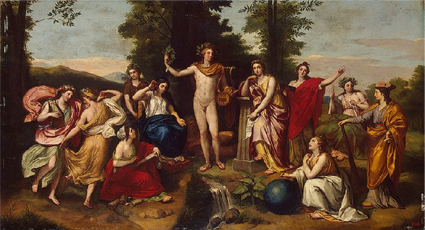Mengs is the prototype for the B-list celebrity, famous for being (briefly) famous. Andrew Graham-Dixon reports
ANTON RAPHAEL Mengs was the most famous painter of the 18th century - for about 15 minutes. In 1761 he painted his presumed masterpiece, a large but flaccid canvas, conflating hints adapted from Raphael and Poussin, which he entitled Parnassus and which was, briefly, one of the most highly regarded pictures in the world. On the strength of what now seems a stunningly dull mythology, with its wooden Muses and mannequin-like Apollo, Mengs was acclaimed by the first great arbiter of Neo-classical taste, Johann Joachim Winckelmann, in terms which any artist at any time in history might have had trouble living up to: ''He is the greatest artist of his time and perhaps of succeeding times, reborn like the phoenix from the ashes of the first Raphael, to teach the world beauty in art, and to achieve the greatest flight committed to human powers in the same.'' But within a few years Mengs and his works would abruptly disappear into obscurity. Winckelmann's phoenix turned out to be nothing of the kind, but a dodo of the Neo-classical age.
Conclusive evidence comes in the exhibition devoted to Mengs that currently occupies the upper galleries of Kenwood House. This is something of a rarity: a show consecrated to the talents of a hopelessly mediocre painter that is none the less fascinating; an exhibition of irredeemably bad art that also amounts to a study in ephemeral artistic celebrity.
Mengs was not only the victim of Winckelmann's wild over-enthusiasm - although, had Winckelmann not damned him with such strong praise, he might never have attracted the venomous dislike that has characterised most later descriptions of his work and would, probably, have been remembered as a merely...

Dull, mediocre, bad - and well worth the price of a ticket
17-08-1993

